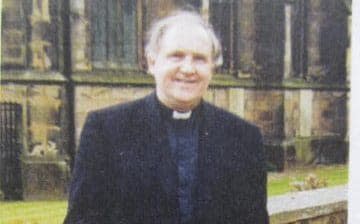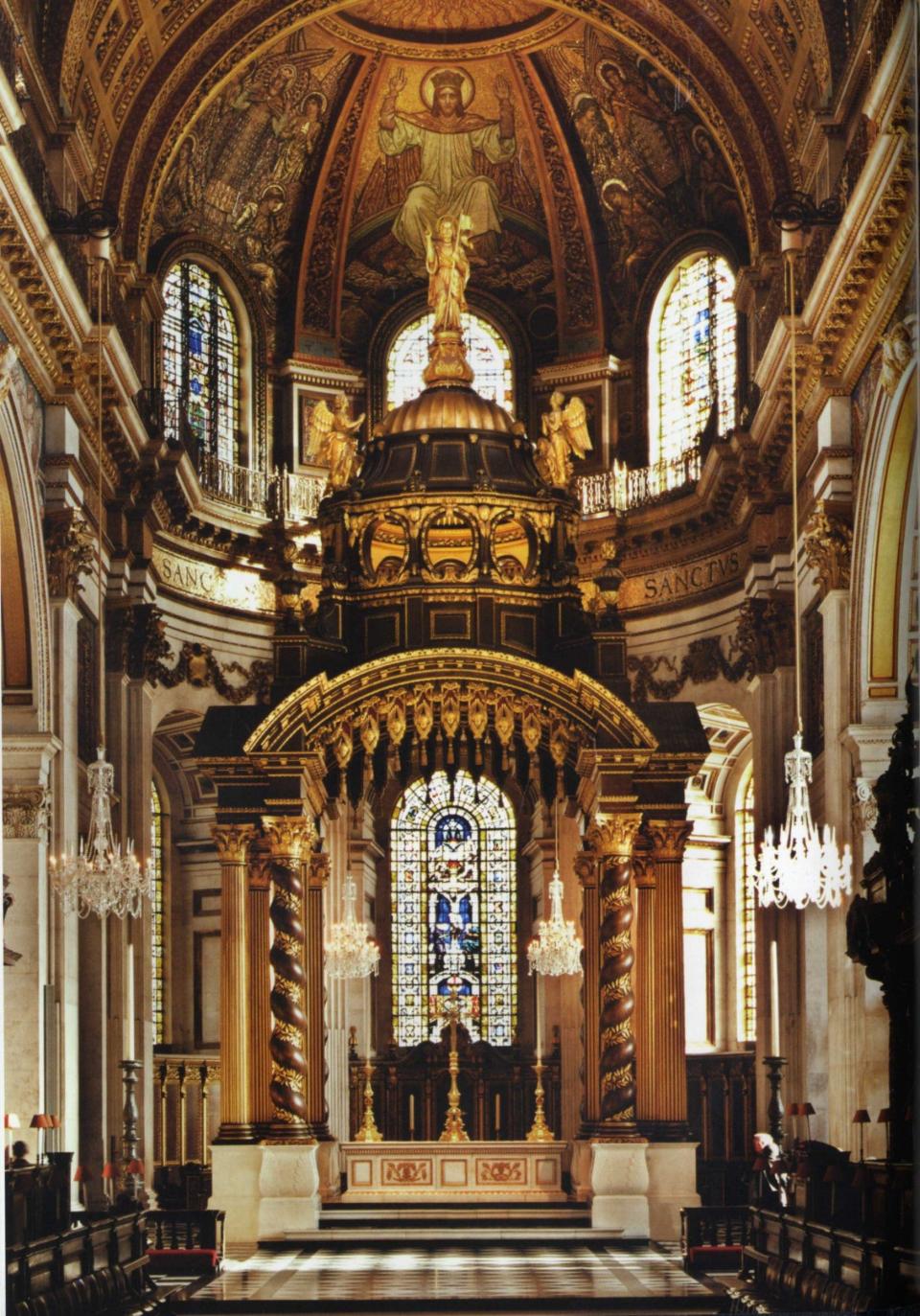Father Anthony Symondson, architectural historian and convert Jesuit priest – obituary
- Oops!Something went wrong.Please try again later.

Father Anthony Symondson, who has died aged 83, was a Jesuit priest and an architectural historian with an unrivalled knowledge of the religious context of late Victorian and 20th-century church architecture.
Anthony Nigel Symondson was born on May 27 1940 in Wimbledon, and was never really happy outside the capital. His father was not his mother’s husband, which created difficulties for him. He did not attend university. An uncle was an architect and churchwarden of St Michael’s, Brighton, and this helped to give young Anthony an interest in church architecture, and particularly in the churches of Brighton.
He first worked in the City, but did not find it congenial, and moved to the Council for the Care of Churches. Deciding on a vocation to the Church of England priesthood, he entered Cuddesdon College in 1974 and was ordained in 1977.
After curacies at St Augustine’s, Kilburn, and St Peter’s, Hackney, in 1980 Symondson became priest-in-charge of St Anne’s, Hoxton, a Victorian church of limited architectural interest, which he beautified with fittings brought from closed churches (though the altar was removed by his successor).
Always inclined to speak his mind, Symondson once astonished a Deanery meeting when he called another priest a “humbug”. After five years in the parish, he decided to become a Roman Catholic, realising that the ordination of women in the Church of England had become inevitable.
He was shaped at a deep level by the last golden age of Anglo-Catholicism, the decade before it was thrown off course by the Second Vatican Council and its long decline began, but he regarded that culture as now finished. He was received into the Catholic Church at the Jesuit church in Farm Street. For a time he ran the Converts’ Aid Society, until in 1989 he entered the novitiate of the Society of Jesus.
Symondson’s decision to become a Jesuit puzzled many of his friends, who might have expected him to join a more traditionalist order such as the Oratorians, but he was in sympathy with the changes brought about by Vatican II.
His decision to become a Jesuit meant that he had to undergo a long and arduous training, which included time spent in Ireland and in Guyana. Guyana was a trial, not least because he had a horror of snakes, but Ireland was correspondingly welcome. He was ordained a Catholic priest in 1997 and took his final vows as a Jesuit in 2011.

It is difficult to avoid the feeling that the Society of Jesus never quite knew what to do with Anthony Symondson. He spent rather an unhappy time as a chaplain at Stonyhurst, and his years as one of the parish priests at Sacred Heart, Wimbledon, where he was much more at home, were clouded by the deterioration of his health.
His particular expertise and passion was for the work of Sir Ninian Comper, a pupil of the great Gothicist G F Bodley and a liturgical expert whose work was equally passionately admired by John Betjeman.
Symondson had been given a considerable quantity of Comper’s papers, though the bulk of his drawings and professional correspondence had been deposited in the RIBA Library by his son Sebastian in 1967. Symondson suffered from writer’s block, but overcame this with the superb catalogue to the exhibition of Comper’s work held at the RIBA Drawings Collection in 1988.
It had been feared that the exhibition would only appeal to a small number of enthusiasts, and the staff were astonished when it turned out to be the most successful show ever put on there. The catalogue soon sold out.
Symondson subsequently published a number of articles, but the magnum opus was the book Sir Ninian Comper which he wrote with the late Stephen Bucknall, published in 2006.
This was intended to be the prolegomenon to a full-scale biography, but one of the principal obstacles was his unwillingness to upset the Bucknall family by writing about Comper’s infatuation with Arthur Bucknall (father of Stephen), and the consequent break with Arthur’s uncle, his architectural partner William Bucknall (whose sister Comper had married).
In 2011 he published an appreciative and perceptive monograph on the church architect Stephen Dykes Bower, whose best known work is at Bury St Edmunds Cathedral. He had known him well. He also contributed book reviews and articles to the Catholic Herald. As a member of the Westminster Cathedral Art and Architecture Committee, he took a perceptive interest in the work of commissioning new mosaics.
He had a deep knowledge of late-19th and early-20th-century fin-de-siècle literature, and he is warmly acknowledged in Brian Reade’s pioneering anthology, Sexual Heretics: Male Homosexuality in English Literature from 1850 to 1900 (1970).
He was a brilliant lecturer on architecture, and could hold a Victorian Society spellbound in a church such as St Cyprian, Marylebone, with his fluency and sharpness of analysis.
Symondson had a lively sense of humour, though his wit was often spiced with waspish malice, and he had a striking gift for mimicry. He loved to invent disparaging nicknames for those he disliked. Friendship with him was not without its strains, but he cared for people, and the estrangements which resulted particularly from his conversion to Rome were upsetting to him.
After a period at Farm Street, and a brief return to Wimbledon, in 2014 he entered the Jesuit care home Corpus Christi at Boscombe on the outskirts of Bournemouth, where he spent 10 years in what Heinrich Heine described as his Matratzengruft (“mattress grave”), a sad end for someone who had been so full of life.
Father Anthony Symondson, born May 27 1940, died January 31 2024

